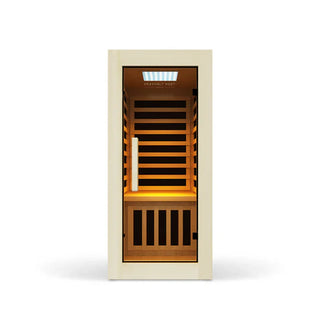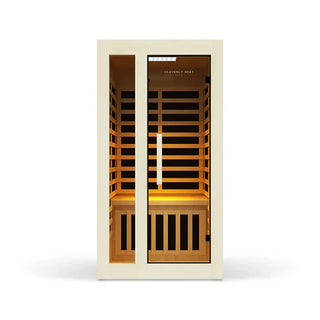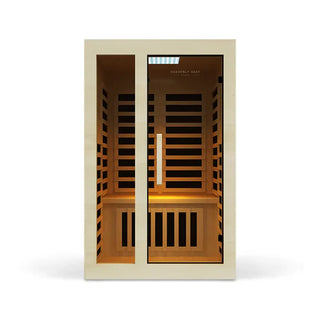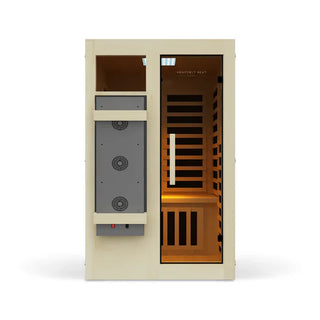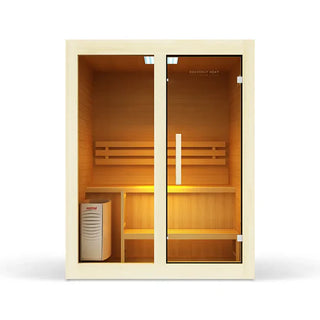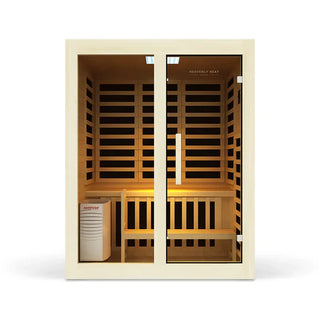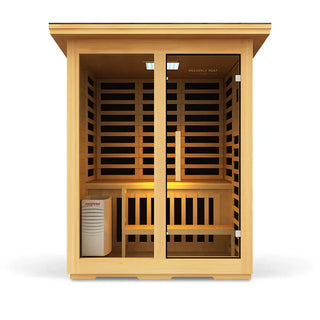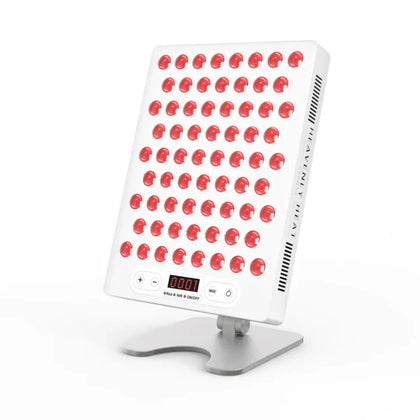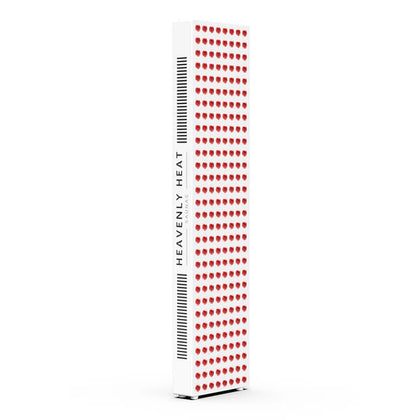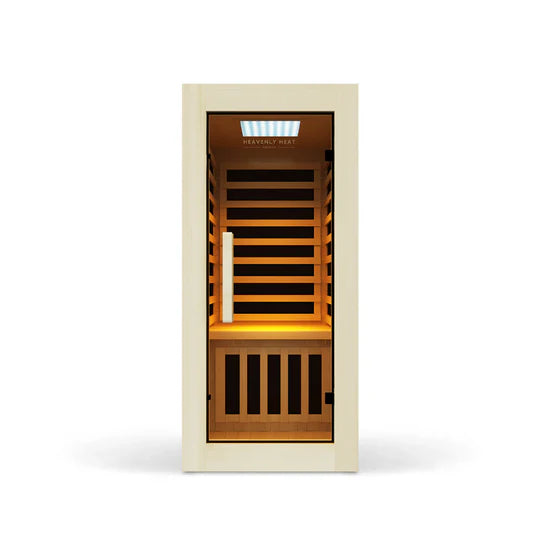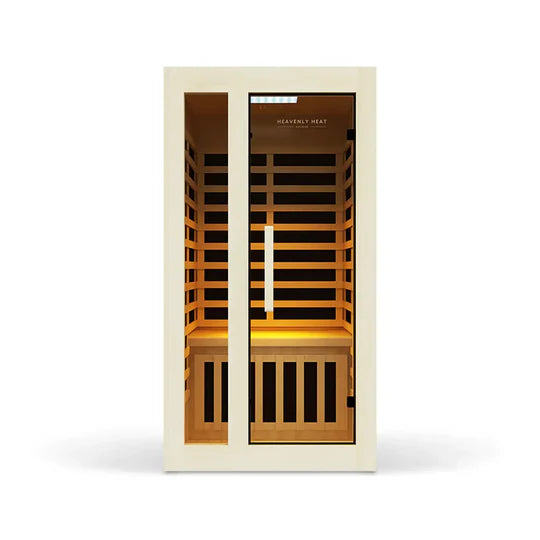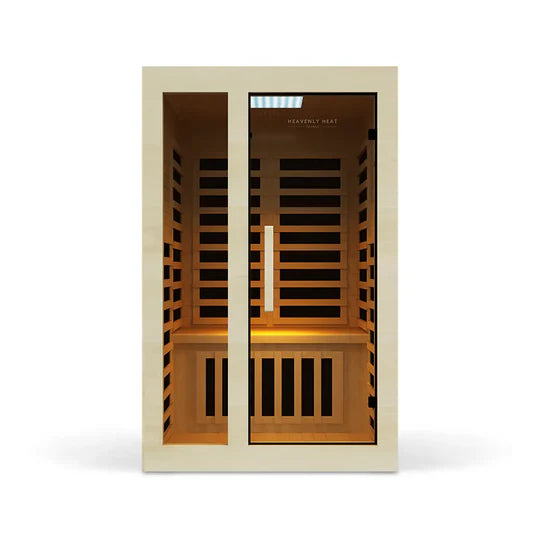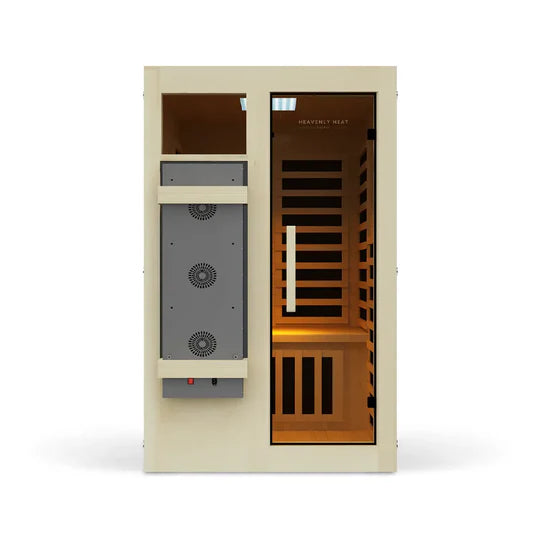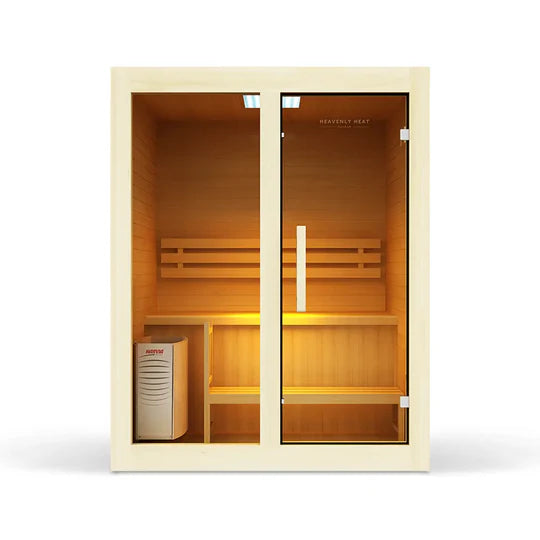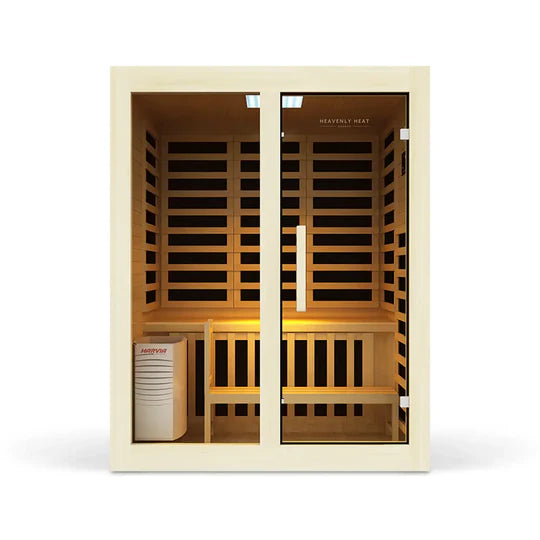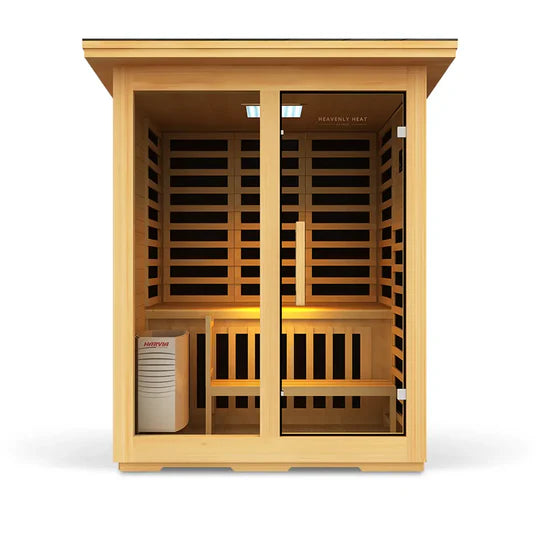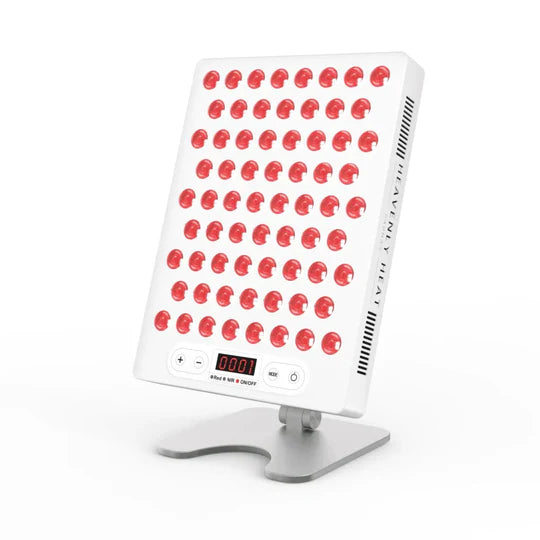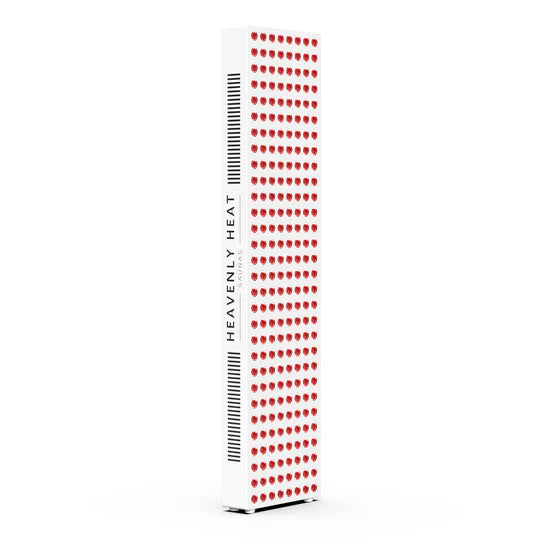1 Person Or 2 Person Sauna: How To Decide What’s Right For You
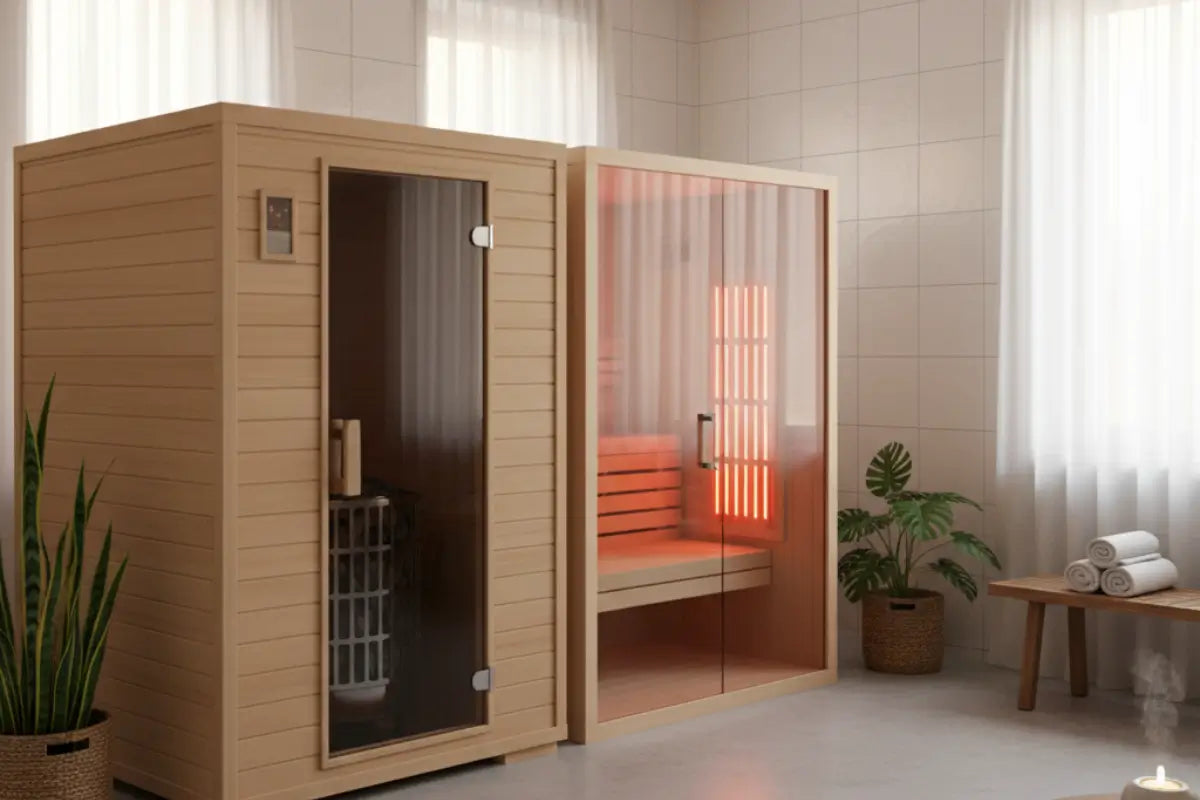
Choosing the right sauna can feel tricky. Should you go for a 1-person cozy retreat or a 2-person space to share? Size, comfort, energy use, and privacy all matter.
In this guide, we break down the differences, helping you pick the perfect sauna for your space, lifestyle, and relaxation needs.
Key Takeaways
Choose the Right Size: A 1-person sauna is compact and cozy, while a 2-person sauna offers extra space for comfort or shared sessions.
Consider Comfort and Seating: Bench layout, backrests, and interior space affect how relaxing your sauna experience will be.
Heating and Energy Use Matter: Smaller saunas heat faster and use less electricity, while larger saunas need more power but offer roomier comfort.
Privacy vs. Social Experience: Opt for a 1-person sauna for solitude, or a 2-person sauna for shared relaxation and conversation.
Plan for Space and Purpose: Measure your room, define your sauna’s use, and consider future needs before choosing the size and type.
1 Person vs 2 Person Sauna: Key Differences
Size and Space Requirements
When deciding between a 1-person and a 2-person sauna, understanding size and space needs is essential.
A typical indoor-only 1-person sauna measures about 36” x 36” x 76 3/8” H, while a 2-person model is slightly larger at 40” x 48” x 76 3/8” H.
As a rule of thumb, plan for roughly one square meter of floor space per person. This means a 2-person sauna should occupy at least two square meters, though more space is needed if you want to stretch out.
For reference, a private sauna around 2 x 2.20 meters (4.4 square meters) comfortably fits four people sitting or two lying down.
The interior volume also grows with size, giving a 2-person sauna more cubic footage, better airflow, and added comfort.
Even small differences in dimensions can affect usability, so consider both floor space and interior volume carefully to ensure your sauna provides a cozy and relaxing experience.

Comfort and Seating Capacity
When choosing between a 1-person and a 2-person sauna, comfort and seating space are important factors.
A 1-person sauna, typically around 3 by 3 feet, offers a cozy, efficient space perfect for solo relaxation.
In contrast, a 2-person sauna, about 4 by 4 feet, provides extra room to stretch, making it ideal for couples or those who prefer more space.
Bench design also varies: 1-person models usually have a single bench, while 2-person saunas often include dual-tier benches, ergonomic backrests, adjustable headrests, or pull-out sections for added comfort.
Standard bench dimensions, around 600 mm wide and 500–600 mm deep, allow users to sit or recline comfortably.
Proper ventilation, such as gaps between bench boards and space behind them, enhances the experience in both types.
While a 1-person sauna offers a snug, energy-efficient retreat, a 2-person model balances warmth and space, accommodating shared sessions or a more spacious solo experience. Your choice depends on space, usage, and preference for intimacy versus flexibility.

Heating Efficiency and Warm-Up Time
The size of your sauna makes a noticeable difference in how quickly it heats up. A 1-person sauna, being compact, usually reaches the perfect temperature in just 15–25 minutes.
In comparison, a 2-person sauna often takes 20–35 minutes, since there’s more air to warm. Power needs vary too: infrared 1-person saunas typically use 1.4–1.6 kW, while 2-person models require 1.8–2.2 kW.
Traditional saunas demand even more energy, with larger heaters sometimes exceeding 4 kW. A smaller sauna not only heats faster but also holds heat more efficiently, saving electricity.
That said, it’s crucial to match the heater to the sauna size, too small a heater must work harder, reducing efficiency.
Other factors like insulation, materials, and room temperature also affect warm-up time and energy use.
Paying attention to these details ensures a comfortable, efficient sauna experience every time.
Cost and Energy Consumption
When deciding between a 1-person and 2-person sauna, cost and energy use play a big role. A 1-person sauna usually costs less upfront, both in purchase and installation, while a 2-person model comes with a higher price tag and slightly more complex setup.
Operating a 2-person sauna uses more electricity, especially if you heat it fully, which can increase your monthly energy bill compared to a smaller sauna.
The size does matter, larger saunas take longer to heat. Over time, a 1-person sauna often offers a lower cost per session, making it more budget-friendly in the long run.
Privacy vs. Social Experience
A 1-person sauna offers complete privacy for relaxation, meditation, or personal routines. A 2-person sauna encourages conversation and shared relaxation but may reduce personal space.
Seating arrangements can help maintain comfort in a shared sauna. Choose solitude in a single-user sauna or social interaction in a larger space.
Factors to Consider When Choosing Sauna Size
Measure Your Space: Know the dimensions of the area where the sauna will go.
Decide on Capacity: Determine how many people will use it at the same time.
Purpose of Sauna: Choose a sauna that fits your intended use (relaxation, therapy, etc.).
Sauna Type: Pick between traditional, infrared, or hybrid types.
Heating Needs: Consider how quickly it heats and energy efficiency.
Budget: Stay within your financial limits.
Future Planning: Think about future use or potential resale value.
FAQs
Where should I put my sauna unit?
Place your sauna in a dry, well-ventilated area with power access, such as a basement, garage, or spare room. Ensure proper heater placement and clearance from walls, maintain airflow gaps, use a stable, dry floor, and provide adequate ventilation to prevent dampness and ensure optimal heat distribution.
Can a 2-person sauna fit in a small room?
Yes, it can. A two-person sauna is compact, energy-efficient, and easy to assemble, fitting into small spaces like closets or bathrooms. Ensure proper ventilation and avoid moisture damage. Relaxation, improved circulation, and stress relief are some advantages of using a home sauna.
Is a 1-person sauna better for privacy?
A one-person sauna offers superior privacy, providing a quiet, personal space for uninterrupted relaxation. Users control temperature, lighting, and session length, enjoy solitude for meditation or therapy, and avoid distractions from others. However, it may feel cramped, lacks social options, and sometimes offers less intense heating than larger units.
When should I consider upgrading to a 2-person sauna?
Consider upgrading to a 2-person sauna when you want to share the wellness experience with a partner, enjoy extra space for solo relaxation, or create a socially intimate activity at home. These saunas balance size and functionality, fitting most spaces while enhancing comfort with features for two.
Are 2-person saunas more suitable for social use?
2-person saunas are ideal for social use, offering an intimate, distraction-free environment that fosters connection, encourages shared wellness routines, and strengthens bonds. They provide a cozy setting for couples or friends to relax, detox, relieve stress, and even enjoy a unique, calming alternative to traditional date nights.
How do I visually assess if a sauna will fit in my space?
To visually assess if a sauna fits, use AR apps or physical mock-ups. Mark floor dimensions with tape or build cardboard frames, check door swings, ensure 6–12 inches wall clearance, 7-foot ceiling height, proper electrical access, and ventilation for safe, comfortable installation in your chosen space.


